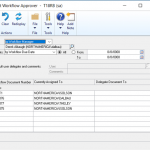 The Microsoft Dynamics 365 for Sales app gives you a single place to keep info about customers and prospects for everyone on your team so that you can all close more sales. This tutorial gives a walk-through of the app and offers a few tips to make your workflow more efficient.
The Microsoft Dynamics 365 for Sales app gives you a single place to keep info about customers and prospects for everyone on your team so that you can all close more sales. This tutorial gives a walk-through of the app and offers a few tips to make your workflow more efficient.
When you first log in, you’ll see a dashboard with charts that show metrics and other information at-a-glance. For example, you’ll be able to see the opportunity pipeline, a list of what’s new, your open leads, and the top opportunities. Clicking on the charts will show you more details and different views. You can also customize the dashboard to display the information that’s most relevant to your role. For a list of everything that you can do in the app, including Activities, click on Sales in the top navigation bar.
Activities
With Activities, you can keep track of email messages, phone calls, and other items associated with a sale that you’re trying to close. To add an activity, first open the customer record, and then click on Activities to add a phone call or a task to the record. Next, add an appointment or an email. Click on Notes if you’d like to add more information to the record.
Advanced Search with Microsoft Dynamics 365
When accessing customer records, you can search on the navigation bar in the Activities area to find a record quickly. Sometimes, however, a simple search won’t get you what you need. In that case, you can click on the Advanced Find button to access the advanced search options.
Accounts
Use the Accounts area to keep track of companies with whom you are working. To create an account, click New and fill in your info. Then click Save when you’re done.
Contacts
In Dynamics 365, the people you work with from your accounts are referred to as Contacts. If you’re dealing with a larger company, then the account will typically have more than one contact. Go to Contacts to see a list of people, and click on any of them to see more details.
Leads
To create a new lead (i.e., a potential sale), go to the Leads page, click New, and then enter the necessary details, including notes and activities. Click Qualify when you have enough information to move forward with a lead. Qualifying a lead turns it into an Opportunity, meaning that it’s promising enough to deserve more attention. To see a list of all opportunities, navigate to Sales > Opportunities > My Open Opportunities. Selecting any Lead or Opportunity will bring you to a page showing the Sales Process Bar, which tells you where you are in the sales cycle and what you need to do next in order to close the deal.
Microsoft Dynamics 365 Reports
The Reports section, which you’ll find on the Site Map under Tools, helps you track trends and see how well you’re progressing toward meeting your goals. For example, you can see which products are selling and which aren’t. Select the report that you want and click Run Report.
Clicking on Filter allows you to edit the filter for the records on which the reports are based. Options for the display and other items are found under Settings. If you need more specific guidance about the functionality that you’re currently using within Dynamics 365, click on the question mark button at any time.
Time-Saving Tips
When adding new records, you can avoid navigating to the pertinent area by clicking on the Quick Create button in the nav bar and selecting the type of record that you want to create. Another way to make your workflow more efficient is to click on the Recently Viewed items button to quickly get back to records, views, or dashboards that you’ve looked at recently. If it’s something that you look at frequently, you can “pin” it there so that it’s always readily available.
For more Dynamics 365 training, peruse our blog or contact us to find out how we can help you get the most out of Dynamics 365 for Sales.





